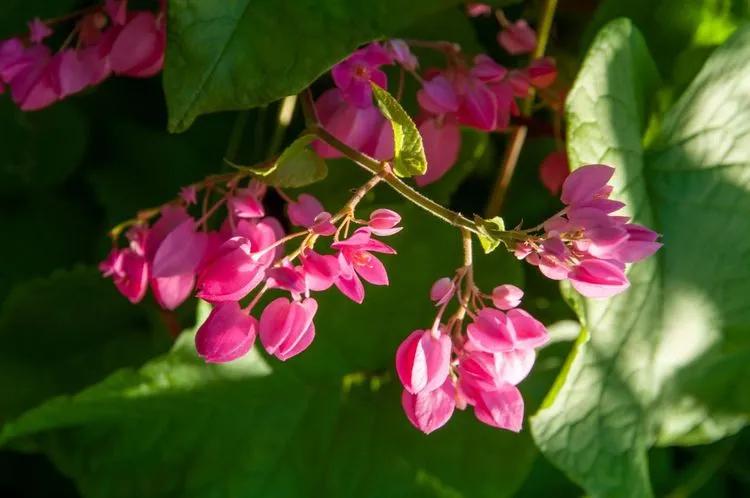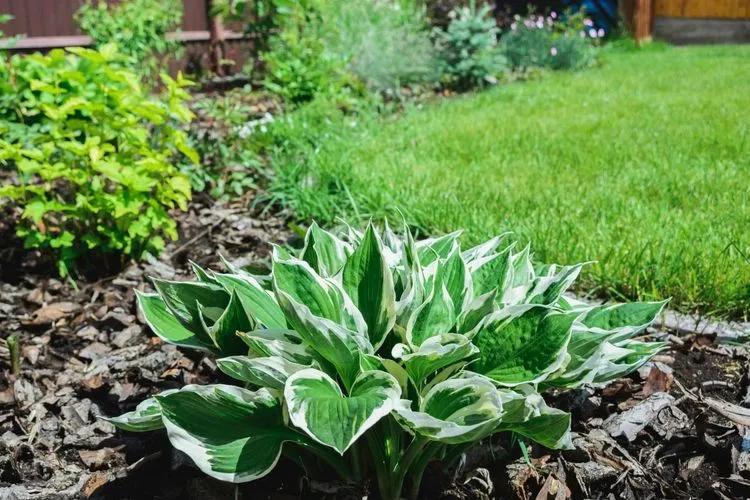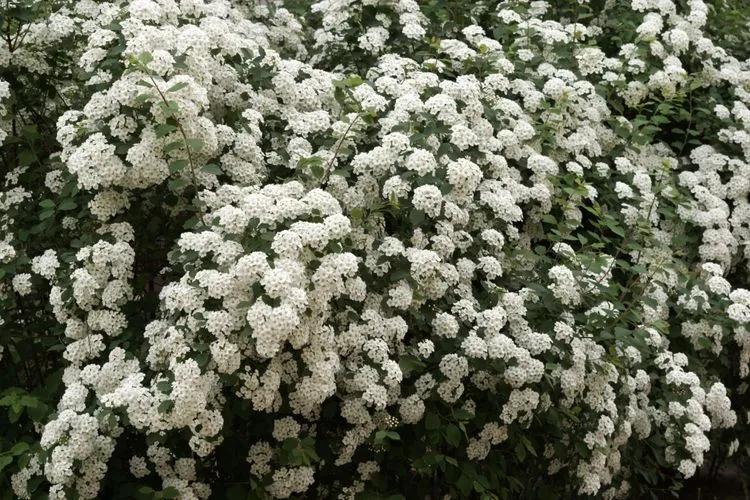Given the increasing frequency of fires and similar emergencies, we understand the need to protect your home as much as possible. Not only furniture or private property can be damaged, but also living organisms, for example, plants. There is no such thing as completely “fire resistant plants.” Most specimens catch fire when exposed to it. Choose high carbon plants that grow close to the ground and have a low sap or resin content. An added bonus for those in dry areas: some fire-resistant plants are also drought-resistant. Here, we look at the plants that are the least susceptible to fire.
African Daisies
 Orange African chamomile (Oseospermum).
Botanical name: Osteostephrum
Also Known As: Cash Chamomile, Blue Eyed Chamomile
Size: Up to 1-1 / 2 feet high; up to 2 feet
Watering Requirements: Regular water until installed; then only periodic watering is required
Flowering time: all year round; depends on the climate
Characteristics: The trailing habit makes it an effective ground cover. Hybrids include a variety of shapes and colors, including orange, red, yellow, purple, lilac, pink, white, etc.
USDA Hardiness Zones: 2-11
Orange African chamomile (Oseospermum).
Botanical name: Osteostephrum
Also Known As: Cash Chamomile, Blue Eyed Chamomile
Size: Up to 1-1 / 2 feet high; up to 2 feet
Watering Requirements: Regular water until installed; then only periodic watering is required
Flowering time: all year round; depends on the climate
Characteristics: The trailing habit makes it an effective ground cover. Hybrids include a variety of shapes and colors, including orange, red, yellow, purple, lilac, pink, white, etc.
USDA Hardiness Zones: 2-11
Coral bells
 Botanical name: Heuchera
Also Known As: Aloema Root
Size: up to 2 feet high and wide
Watering Requirements: Moderate to Normal
Flowering time: June-September; all year round in a temperate winter climate
Characteristics: Known mainly for its evergreen foliage, which has jagged edges with leaves that can be dark green, red, burgundy, gold, orange, or other autumn or warm colors. Prefers a light shade.
USDA Hardiness Zones: 3-8
Botanical name: Heuchera
Also Known As: Aloema Root
Size: up to 2 feet high and wide
Watering Requirements: Moderate to Normal
Flowering time: June-September; all year round in a temperate winter climate
Characteristics: Known mainly for its evergreen foliage, which has jagged edges with leaves that can be dark green, red, burgundy, gold, orange, or other autumn or warm colors. Prefers a light shade.
USDA Hardiness Zones: 3-8
Agapanthus
 Botanical name: Agapanthus
Size: with flowers about 1-1 / 2-4 feet tall
Watering Requirements: Few, but Regular
Characteristics: South African natives, identified by their fountain-shaped leaves. Round clusters of blue or white flowers on long stems in large stands, sold as plants or bulbs.
Bloom Time: Late Spring-Summer
Species to try: Agapanthus Afrikanus
USDA Hardiness Zones: 9-11
Botanical name: Agapanthus
Size: with flowers about 1-1 / 2-4 feet tall
Watering Requirements: Few, but Regular
Characteristics: South African natives, identified by their fountain-shaped leaves. Round clusters of blue or white flowers on long stems in large stands, sold as plants or bulbs.
Bloom Time: Late Spring-Summer
Species to try: Agapanthus Afrikanus
USDA Hardiness Zones: 9-11
Plantain lily
 Botanical name: Hosta
Size: 15 inches to 3 feet high; up to 4 feet wide
Watering Requirements: Normal
Blossom time: spring bloom
Characteristics: Mainly shade dwellers, hosts are known for their stunning broad leaves, which are variations of green and are often variegated. Foliage colors include light green, gray, and blue-green. Some have purple, lavender, or white flowers that are bell-shaped and fragrant. Some varieties or hybrids have waxy leaves.
Types to Try: Hybrids such as Blue Angel, Gold Standard, Great Expectations
USDA Hardiness Zones: 3-8
Botanical name: Hosta
Size: 15 inches to 3 feet high; up to 4 feet wide
Watering Requirements: Normal
Blossom time: spring bloom
Characteristics: Mainly shade dwellers, hosts are known for their stunning broad leaves, which are variations of green and are often variegated. Foliage colors include light green, gray, and blue-green. Some have purple, lavender, or white flowers that are bell-shaped and fragrant. Some varieties or hybrids have waxy leaves.
Types to Try: Hybrids such as Blue Angel, Gold Standard, Great Expectations
USDA Hardiness Zones: 3-8
Spirea shrub with white flowers
 Botanical name: Spiraea
Size: 2 to 4 feet high and wide
Blossom time: bloom in summer in summer
Watering Requirements: Normal to Moderate
Characteristics: Hardy, easy to grow shrubs that benefit from pruning in winter or early spring. The flowers are white, purple or pink in the shape of a bowl. There are two main types of spireas: the crowned-wreath type and the more bushy type.
USDA Hardiness Zones: 3-8
Botanical name: Spiraea
Size: 2 to 4 feet high and wide
Blossom time: bloom in summer in summer
Watering Requirements: Normal to Moderate
Characteristics: Hardy, easy to grow shrubs that benefit from pruning in winter or early spring. The flowers are white, purple or pink in the shape of a bowl. There are two main types of spireas: the crowned-wreath type and the more bushy type.
USDA Hardiness Zones: 3-8
Star jasmine
 Botanical name: Trachelospermum jasminoides
Also Known As: Jasmine Confederation, maile haole
Size: When grown as a vine, it can reach 12 feet long and 4 feet wide
Watering Needs: Conventional; loves drained soil
Flowering Time: Late Spring to Summer Characteristics: Native to Japan and China, this versatile plant can be used as a ground cover, climber or trailer in the garden. The small flowers are very fragrant. Grows well on gazebos, trellises and pergolas.
USDA Hardiness Zones: 8-11
Botanical name: Trachelospermum jasminoides
Also Known As: Jasmine Confederation, maile haole
Size: When grown as a vine, it can reach 12 feet long and 4 feet wide
Watering Needs: Conventional; loves drained soil
Flowering Time: Late Spring to Summer Characteristics: Native to Japan and China, this versatile plant can be used as a ground cover, climber or trailer in the garden. The small flowers are very fragrant. Grows well on gazebos, trellises and pergolas.
USDA Hardiness Zones: 8-11
Torch lily
 Botanical name: Kniphofia
Also Known As: Red Hot Poker
Size: up to 6 feet tall
Flowering time: Falls in summer
Watering Requirements: Moderate to Normal Characteristics: An exotic herb with serrated foliage. Produces stems of red and yellow flowers that resemble torches or glow poker.
USDA Zones: 4-9
Botanical name: Kniphofia
Also Known As: Red Hot Poker
Size: up to 6 feet tall
Flowering time: Falls in summer
Watering Requirements: Moderate to Normal Characteristics: An exotic herb with serrated foliage. Produces stems of red and yellow flowers that resemble torches or glow poker.
USDA Zones: 4-9
What is more
Pay attention to Oaks - if planted outside, they are indeed iconic trees. Oaks can ower air conditioning costs by about 50% since their canopies can cool the community. Also, Manzanita has resilient trunks and branches; it is even edible. Yucca is the tree with almost iridescent quality when in bloom; it also possesses good fire resistance. Although, Aloe Vera is our ultimate choice. It resists ignition, along with Ice Plant and Rockrose.
